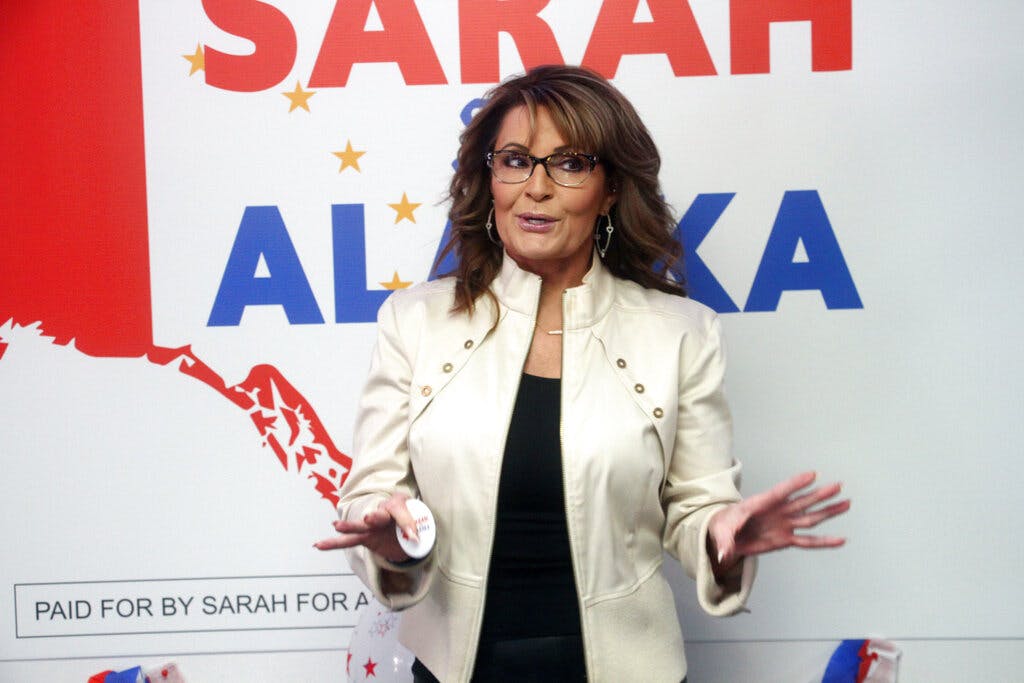Palin Seizes Early Lead in Alaska Primary as Santa Claus Trails
The top four vote-getters, regardless of party affiliation, will advance to an August special election in which ranked choice voting will be used. The winner of the special election will serve the remainder of Representative Don Young’s term, which ends in January.

JUNEAU, Alaska — Governor Palin leads in early results from Saturday’s special primary for the state’s only seat in the House of Representatives, as voters whittled down the list of 48 candidates running for the position that was held for 49 years by Representative Don Young.
The early results showed Ms. Palin, endorsed by President Trump, with 29.8 percent of the votes counted so far; Republican Nick Begich had 19.3 percent; independent Alan Gross had 12.5 percent; Democrat Mary Peltola with 7.5 percent; and Republican Tara Sweeney had 5.3 percent.
A candidate whose name is Santa Claus, a self-described “independent, progressive, democratic socialist,” had 4.5 percent.

The initial results released by the state Division of Elections included 108,729 votes. It was not immediately clear how many ballots were outstanding. The division reported late Saturday that it had received about 139,000 ballots so far. Ballots had to be postmarked by Saturday.
The Associated Press has not called any winners in the special primary.
The top four vote-getters, regardless of party affiliation, will advance to an August special election in which ranked choice voting will be used. The winner of the special election will serve the remainder of Mr. Young’s term, which ends in January. Mr. Young died in March at age 88.
This election was unlike any the state has seen, crammed with candidates and conducted primarily by mail. This was the first election, too, under a system approved by voters in 2020 that ends party primaries and uses ranked choice voting in general elections.
Saturday marked the first ballot count; state elections officials plan additional counts on Wednesday and Friday, and a final count on June 21. They have targeted June 25 to certify the race.
Ms. Palin, the 2008 Republican vice presidential nominee, released a statement expressing gratitude “to all of my wonderful supporters who voted to make Alaska great again!”
The sheer number of candidates left some voters overwhelmed, and many of the candidates themselves faced challenges in setting up a campaign on the fly and trying to leave an impression on voters in a short period of time. The candidate filing deadline was April 1.
Relatively few candidates were running for the seat before Mr. Young’s death. Mr. Begich was among the early entrants; he launched his campaign last fall and worked to win support among conservatives. The businessman, who hails from a family of prominent Democrats, was endorsed by the Alaska Republican party.
Ms. Peltola, a former state lawmaker from Bethel who has been involved in fisheries issues, said earlier this week that she entered the race with low name recognition but believes she’s changed that and has momentum behind her candidacy.
Ms. Palin’s run marks her first bid for elected office since resigning as governor partway through her term in 2009. She was endorsed in this campaign by some national political figures, including Mr. Trump, who participated in a “telerally” for her and said Ms. Palin would “fight harder than anybody I can think of,” particularly on energy issues.
Ms. Palin sought to assure voters that she is serious about her bid and committed to Alaska.
During the campaign, opponents poked at that. Dr. Gross, an orthopedic surgeon who made an unsuccessful run for the United States Senate in 2020, said Palin “quit on Alaska.” Begich and Sweeney made points of saying they are not quitters.
Dr. Gross, in an email to supporters during the campaign, said Ms. Palin and Mr. Begich are candidates who will be hard to beat but said he is “ready and able to take on this fight.”
Ms. Sweeney was assistant secretary of Indian Affairs in the Interior Department under Mr. Trump and was endorsed by a group that represents leaders of the state’s influential Alaska Native regional corporations.
She said she understands the “pressure cooker” environment of Washington, D.C.
